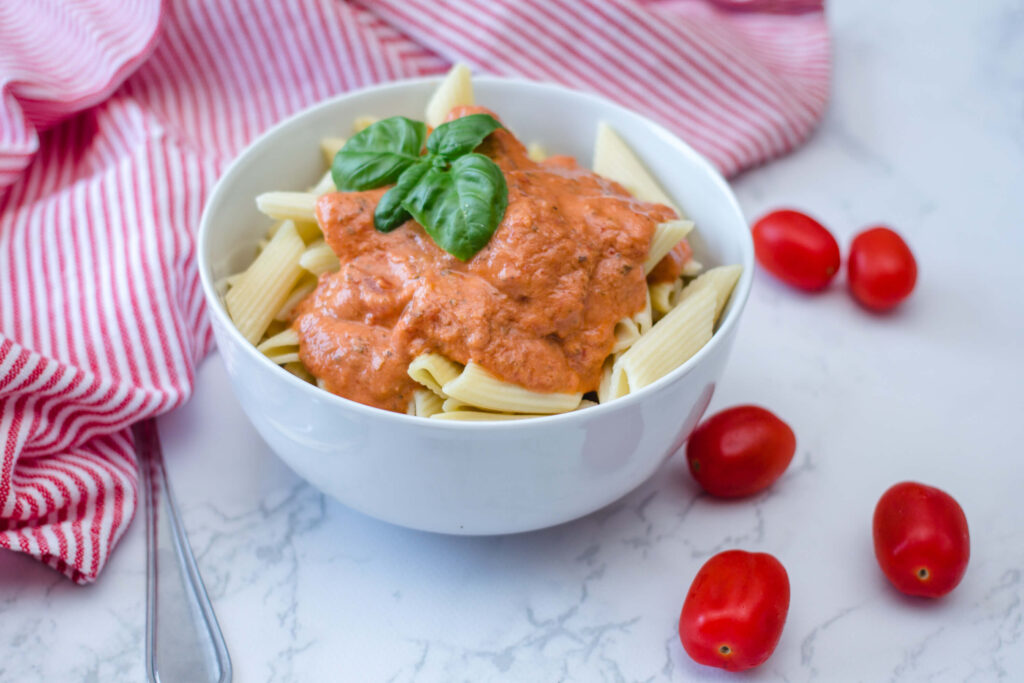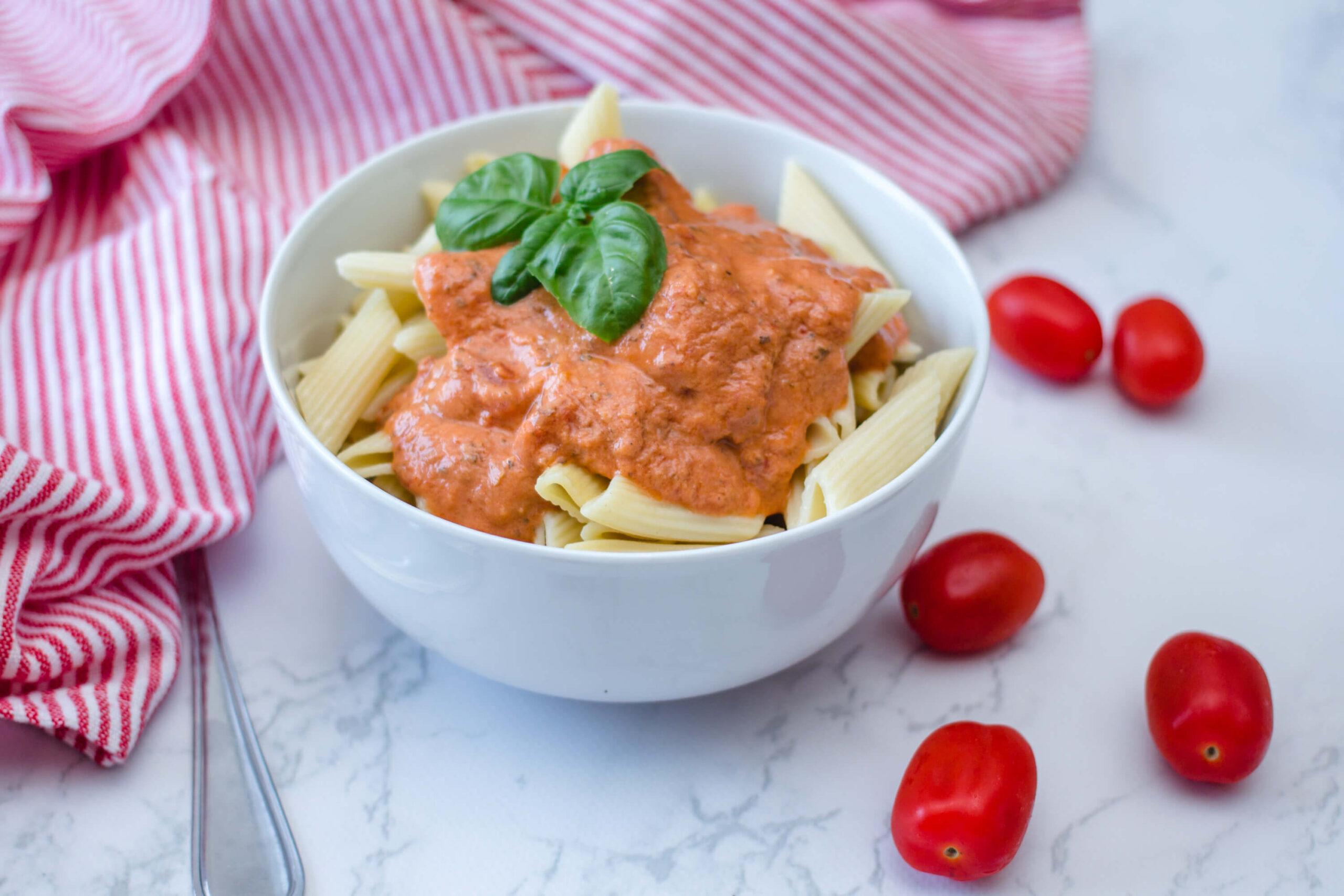
What is Rosée Sauce? Unveiling the Pink Pasta Perfection
Rosée sauce, also known as pink sauce, is a delightful and versatile culinary creation that has captured the hearts (and taste buds) of food enthusiasts worldwide. But what is rosée sauce, exactly? It’s essentially a tomato-based sauce enriched with cream, resulting in a beautiful pink hue and a velvety smooth texture. This simple yet elegant sauce is incredibly adaptable, pairing well with pasta, vegetables, and even proteins. Let’s delve deeper into the origins, ingredients, variations, and uses of this beloved sauce.
The Origins of Rosée Sauce
While the exact origins of rosée sauce are somewhat debated, it’s widely believed to have originated in Italy, though its popularity has spread globally. It’s often considered a variation of classic tomato sauce, incorporating creamy elements to create a richer and more luxurious experience. Some culinary historians suggest that it evolved as a way to balance the acidity of tomatoes with the richness of dairy, resulting in a harmonious and flavorful sauce. The name “rosée,” derived from the French word for “rosy” or “pink,” aptly describes the sauce’s characteristic color.
Key Ingredients in Rosée Sauce
The beauty of rosée sauce lies in its simplicity. The core ingredients are readily available, making it easy to prepare at home. Here’s a breakdown of the essential components:
- Tomato Base: This forms the foundation of the sauce. You can use canned crushed tomatoes, tomato sauce, or even fresh tomatoes that have been pureed. The quality of the tomatoes will significantly impact the final flavor.
- Cream: This is what gives rosée sauce its signature creamy texture and pink color. Heavy cream or half-and-half are commonly used, but for a lighter version, you can substitute with milk or a plant-based cream alternative.
- Aromatics: Onions and garlic are essential for building flavor. Sautéing them in olive oil before adding the tomatoes creates a fragrant and savory base.
- Herbs: Fresh or dried herbs add depth and complexity to the sauce. Basil, oregano, and parsley are classic choices.
- Seasoning: Salt, pepper, and a pinch of sugar are crucial for balancing the flavors and enhancing the overall taste.
- Optional Additions: Many recipes include a splash of vodka or white wine for added complexity. A touch of Parmesan cheese can also enhance the richness and flavor.
How to Make Rosée Sauce: A Step-by-Step Guide
Making rosée sauce at home is surprisingly easy. Here’s a simple recipe to get you started:
- Sauté Aromatics: In a large saucepan, heat olive oil over medium heat. Add chopped onion and cook until softened, about 5 minutes. Add minced garlic and cook for another minute until fragrant.
- Add Tomatoes: Pour in your chosen tomato base (crushed tomatoes, sauce, or puree). Season with salt, pepper, sugar, and your favorite herbs (basil, oregano, etc.). Bring to a simmer.
- Simmer and Reduce: Reduce the heat to low and simmer the sauce for at least 15-20 minutes, or longer for a richer flavor. Stir occasionally to prevent sticking.
- Incorporate Cream: Stir in the cream (heavy cream, half-and-half, or milk) and gently heat through. Do not boil the sauce after adding the cream, as it may curdle.
- Adjust Seasoning: Taste the sauce and adjust seasoning as needed. Add more salt, pepper, or herbs to your liking.
- Optional Additions: Stir in a splash of vodka or white wine, or grated Parmesan cheese, if desired.
- Serve: Serve the rosée sauce hot over your favorite pasta, vegetables, or protein.
Variations of Rosée Sauce: Exploring Different Flavors
One of the great things about rosée sauce is its versatility. You can easily customize it to suit your preferences and dietary needs. Here are a few popular variations:
Vodka Sauce
Vodka sauce is a classic variation of rosée sauce that adds a subtle kick and enhances the overall flavor. The vodka helps to emulsify the sauce and create a smoother texture. It’s often paired with penne pasta and garnished with Parmesan cheese.
Spicy Rosée Sauce
For those who enjoy a bit of heat, adding red pepper flakes or a dash of hot sauce to the rosée sauce can create a spicy and flavorful dish. This variation pairs well with shrimp or sausage.
Vegetarian/Vegan Rosée Sauce
Rosée sauce can easily be adapted for vegetarian or vegan diets by using plant-based cream alternatives, such as cashew cream, soy cream, or oat cream. Ensure that all other ingredients are also plant-based.
Seafood Rosée Sauce
Adding seafood such as shrimp, scallops, or mussels to rosée sauce creates a decadent and flavorful dish. Sauté the seafood separately and then stir it into the sauce just before serving.
Mushroom Rosée Sauce
Sautéing mushrooms and adding them to rosée sauce adds an earthy and savory dimension. This variation pairs well with pasta or risotto.
What to Serve with Rosée Sauce: Perfect Pairings
Rosée sauce is incredibly versatile and can be paired with a wide variety of dishes. Here are some popular serving suggestions:
- Pasta: Penne, rigatoni, and fusilli are excellent choices for capturing the sauce.
- Vegetables: Roasted vegetables like broccoli, zucchini, and bell peppers complement the sauce beautifully.
- Protein: Grilled chicken, shrimp, sausage, or tofu can be served over a bed of rosée sauce.
- Pizza: Use rosée sauce as a base for pizza instead of traditional tomato sauce.
- Lasagna: Substitute rosée sauce for some of the tomato sauce in your lasagna recipe for a creamy twist.
Health Benefits of Rosée Sauce
While rosée sauce is undoubtedly delicious, it’s important to consider its nutritional content. The health benefits will vary depending on the ingredients used. Tomato-based sauces are a good source of lycopene, an antioxidant that may help protect against certain diseases. However, the cream content can contribute to higher fat and calorie levels. Opting for lighter cream alternatives or using smaller portions can help make it a healthier choice.
Tips and Tricks for the Perfect Rosée Sauce
Here are some helpful tips and tricks to ensure your rosée sauce turns out perfectly every time:
- Use High-Quality Tomatoes: The quality of the tomatoes will significantly impact the flavor of the sauce.
- Don’t Overcook the Cream: Avoid boiling the sauce after adding the cream, as it may curdle.
- Simmer for Longer: Simmering the sauce for a longer period allows the flavors to meld together and create a richer taste.
- Taste and Adjust Seasoning: Taste the sauce frequently and adjust seasoning as needed to achieve the perfect balance of flavors.
- Use Fresh Herbs: Fresh herbs add a vibrant and aromatic flavor to the sauce.
Rosée sauce is a culinary gem that offers a delightful combination of flavors and textures. Whether you’re a seasoned cook or a beginner in the kitchen, this versatile sauce is sure to impress. So, the next time you’re looking for a delicious and easy-to-make sauce, consider rosée sauce – you won’t be disappointed! It’s a simple sauce, but mastering it opens doors to so many pasta dishes. Understanding what is rosée sauce is the first step to culinary exploration.
From its creamy texture to its vibrant pink hue, rosée sauce is a true crowd-pleaser. Experiment with different variations and pairings to discover your own signature dish. Happy cooking!
[See also: How to Make Perfect Pasta]
[See also: Different Types of Pasta Sauces]

